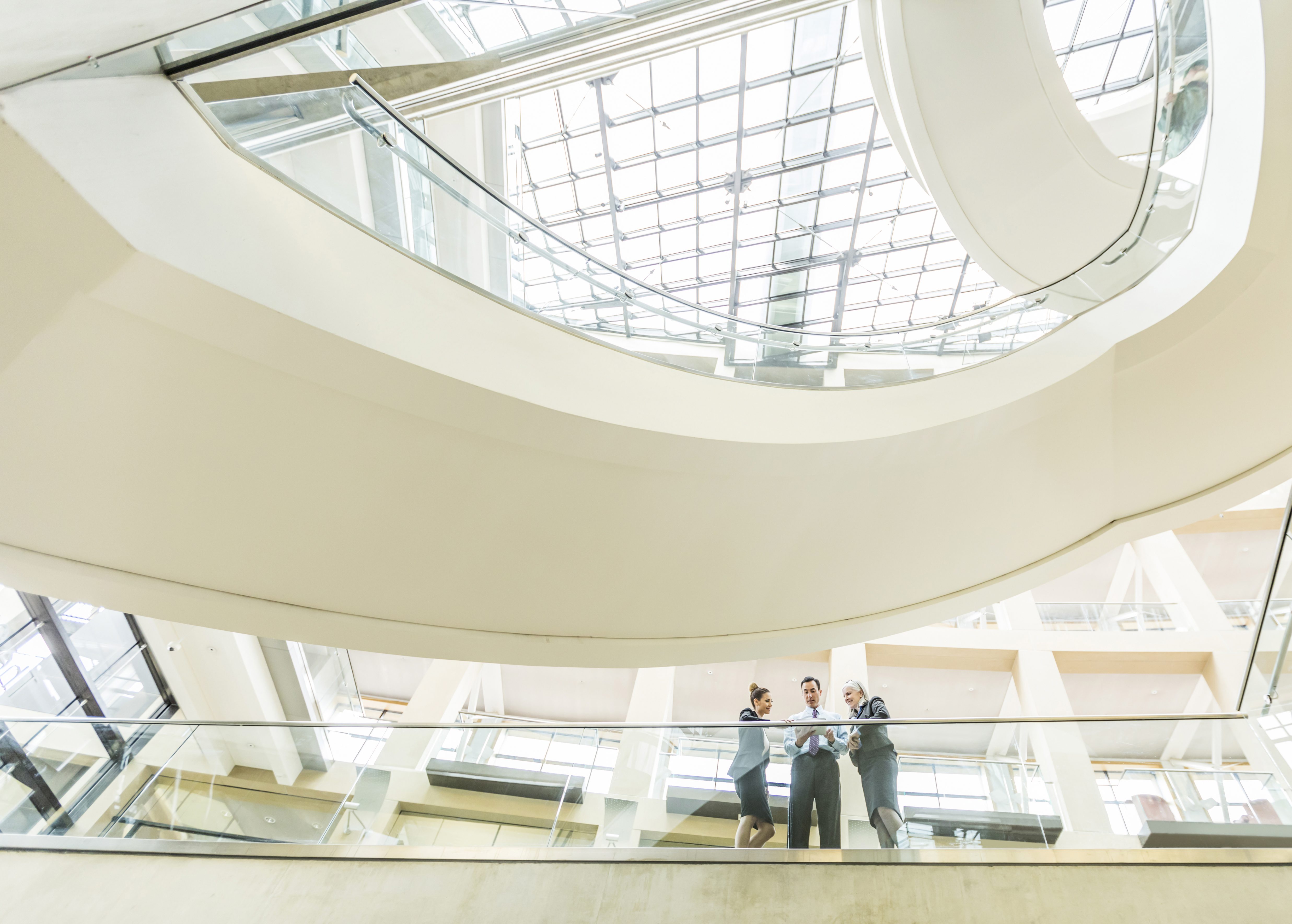When it comes to buildings, what exactly is flexibility and why are so many experts talking about it now? The concept of flexible buildings has been around for some time. For example, the concept of Open Building proposes a better way to design, construct, and manage buildings that are “inherently more sustainable [and] seeks to enhance longevity and resilience.” These concepts suggest that the structural aspects of new building architectures (e.g., walls and infrastructure) support reconfiguration to suit changing needs.

While building owners, operators, and occupants have long considered the importance of floor plan configuration, it is increasingly important for mechanical, electrical, and digital infrastructure systems – controlled by a building management system (BMS) – to dynamically adapt to changing needs. I am sure most of us have experienced a situation where office walls have moved, but now it is too cold in one area and too hot in another because the pre-existing comfort sensors and controls could not be adapted. Flexibility is also needed to coordinate building performance adjustments in response to major events, like the pandemic.
As part of my work with the Forbes Technology Council, I discuss flexibility in more detail, including the role of smart building technology. The following are a few key points from an article I developed for Forbes.
We worked remotely during the pandemic – what’s next?
The pandemic changed almost every aspect of our lives, including how we work. During its height, the pandemic caused major buildings to be left near vacant, while the use of restaurants and transportation ground to a halt. Employees worked from home, with many of them appreciating the lack of daily commute and the flexibility to be with their families.
What does this mean for a return to the office? Global consulting firm PwC has reported some interesting findings. In Germany, 71% of employees want to continue working from home, at least two or three days a week, while in Canada only one in five wants to go back to the workplace full time. In the U.S., remote work has been such a success that 87% of executives are planning changes to their real estate strategy, with 31% expecting to reduce office space.
Even with the benefits of working remotely, people still value having face time with one another to foster collaboration, creativity, and a sense of community. PwC notes, “Executives and employees [are] converging around a post-pandemic future with a lot more flexibility, yet few are prepared to completely abandon the office space.”
For different companies, this may mean different things, but buildings will not become obsolete. It simply means we will view them differently – and they will need to transform. A recent report from Deloitte recommends, “To help people find a better balance between digital and in-person interaction, offices should be revamped to become collaborative spaces … fueling innovation that will give the business a competitive edge.” Imagine more design labs, innovation centers, and niche hubs for client meetings.
Clearly, offices need to adapt to new ways of working. But what does this mean for building owners?
The future of buildings is flexible and resilient
Most of today’s building stock is over 20 years old and will be around for many years to come. However, these buildings are typically not flexible enough to adapt to the new needs of the workplace.
Buildings need to flex with shifting demands and to withstand natural or human-made disasters, which can affect business priorities, staffing levels, and budgets. Flexibility means being able to change layouts and scale up or down to varying occupancy and ventilation needs, but without needing to replace the BMS or other infrastructures.
For building developers/owners, there are great incentives to invest in these capabilities. A more flexible building will enable space to be optimized for maximum tenant occupancy. It also means a building can adapt to changing tenant needs in the future. A digital backbone will enable new applications the tenant may want, which you may not know today. Finally, flexible infrastructure will enable larger reconfigurations of floors or conversions of a building to adapt to market demands, such as changing the mix of commercial versus residential space.
Tenants will also demand more technology choices from their landlords. For example, many companies are now seeking a unified experience for their staff and customers. This may include giving traveling employees a consistent experience when using an app (such as EcoStruxure Engage Enterprise) for room booking, controlling room comfort settings, and other functions.
Other trends are also emerging, such as space offered under an office-as-a-service model. This gives companies greater flexibility in how space is used, but it also places higher expectations on their building owner. In a competitive market, prospective tenants will seek best-in-class space that is equipped with the right capabilities, such as security, access control, and visitor management systems. For building developers, it is a smart investment to embed this flexibility of features and layout upfront, as these will help define a premium asset that will return higher yields through higher occupancy per square footage.
Another growing trend is in mixed-use buildings, which can combine offices, retail malls, apartments, dining, and more into a single structure. Such buildings are attractive to people and businesses that like urban-style living, but they also deliver other benefits to the building owner. This concentrated density of different types of uses and proximity to public infrastructures enables shared services (e.g., microgrid) and lowers costs of electrical, transportation, and other interconnections. Mutualization of infrastructures also reduces duplication as well as improving efficiency and resilience.
Digitalization enables adaptable workplaces
Digitalization is a critical part of making buildings more flexible. IoT connectivity across entire building management system infrastructures gives building managers the insight and control they need to adapt and balance the environment for each space as requirements or usage evolves. Traffic patterns, CO2 concentrations, temperature, humidity, noise, and other factors can all be monitored and analyzed in real-time, feeding decisions, and automated BMS actions.
Interoperable, connected buildings support reconfigurations in modular and flexible ways. For example, individual room controllers, such as those that are part of our Connected Room Solution, can be easily paired to provide unified monitoring and control of comfort parameters and window blinds in a combined space. This can be controlled locally or remotely through software.
As organizations re-evaluate how they will use workplaces, building owners should now consider steps to support short- and long-term market needs.
- How will you support today’s need for flexible infrastructure and capabilities to increase the use of space and reduce waste?
- How can you support layout evolutions that accommodate different uses within the same space?
- Do you have the appropriate digital backbone in your infrastructure to enable your building to adapt to tenant and market needs well into the future?
In my next post, I will have a look at how personalization will be key to creating offices of the future. To learn more, discover the Schneider Electric vision for Buildings of the Future. We also invite you to download the World Economic Forum report “A Framework for the Future of Real Estate.”
 |
Schneider Electric has been recognized as the world’s most sustainable corporation in 2021 by Corporate Knights Global 100 Index. |



